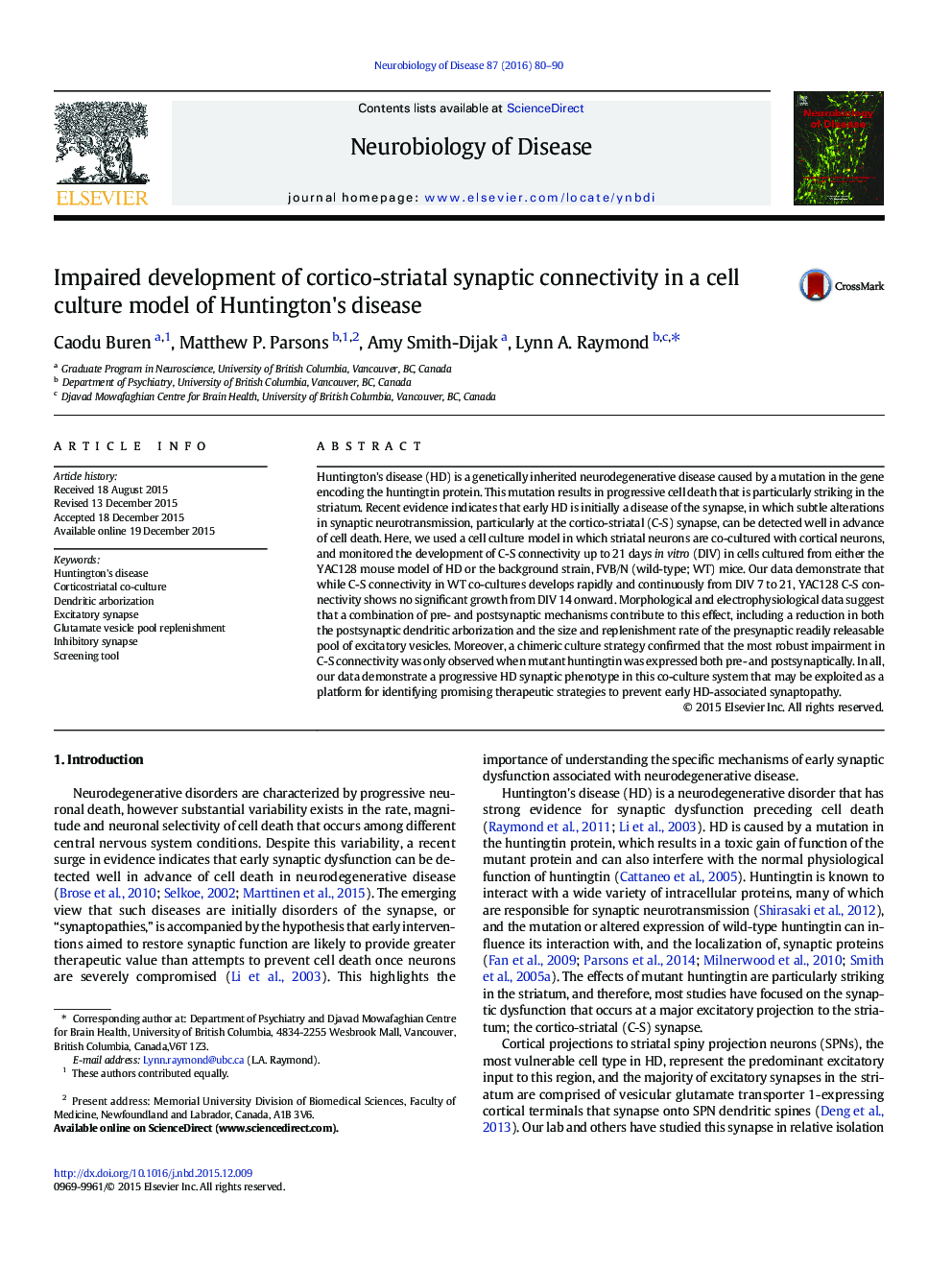| Article ID | Journal | Published Year | Pages | File Type |
|---|---|---|---|---|
| 6021506 | Neurobiology of Disease | 2016 | 11 Pages |
Abstract
Huntington's disease (HD) is a genetically inherited neurodegenerative disease caused by a mutation in the gene encoding the huntingtin protein. This mutation results in progressive cell death that is particularly striking in the striatum. Recent evidence indicates that early HD is initially a disease of the synapse, in which subtle alterations in synaptic neurotransmission, particularly at the cortico-striatal (C-S) synapse, can be detected well in advance of cell death. Here, we used a cell culture model in which striatal neurons are co-cultured with cortical neurons, and monitored the development of C-S connectivity up to 21Â days in vitro (DIV) in cells cultured from either the YAC128 mouse model of HD or the background strain, FVB/N (wild-type; WT) mice. Our data demonstrate that while C-S connectivity in WT co-cultures develops rapidly and continuously from DIV 7 to 21, YAC128 C-S connectivity shows no significant growth from DIV 14 onward. Morphological and electrophysiological data suggest that a combination of pre- and postsynaptic mechanisms contribute to this effect, including a reduction in both the postsynaptic dendritic arborization and the size and replenishment rate of the presynaptic readily releasable pool of excitatory vesicles. Moreover, a chimeric culture strategy confirmed that the most robust impairment in C-S connectivity was only observed when mutant huntingtin was expressed both pre- and postsynaptically. In all, our data demonstrate a progressive HD synaptic phenotype in this co-culture system that may be exploited as a platform for identifying promising therapeutic strategies to prevent early HD-associated synaptopathy.
Keywords
Related Topics
Life Sciences
Neuroscience
Neurology
Authors
Caodu Buren, Matthew P. Parsons, Amy Smith-Dijak, Lynn A. Raymond,
